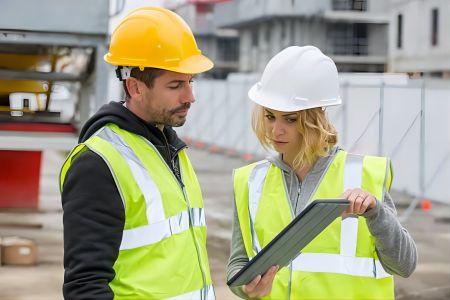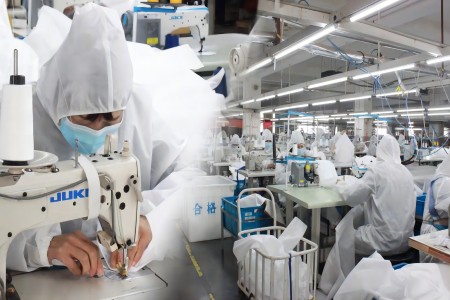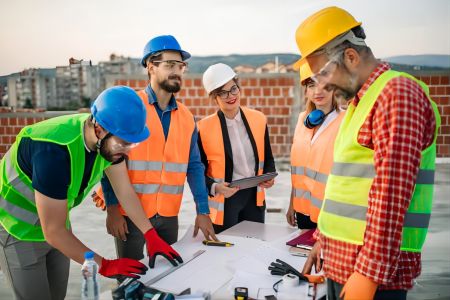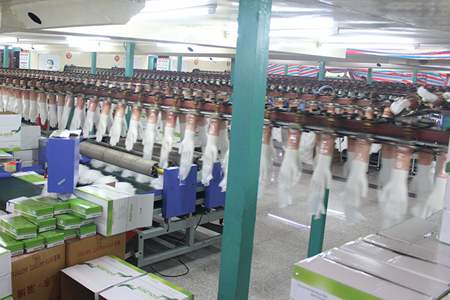2023/9/21

Reflective Vests: The Must-Have Safety Gear for Construction Workers
Construction work is one of the most dangerous jobs out there. Workers are exposed to various risks such as falling objects, heavy machinery, and electrical hazards. To ensure their safety, construction workers need to wear proper protective gear. One of the most essential pieces of safety gear is the reflective vest. These vests are designed to make workers visible to others, especially in low-light conditions. Reflective vests are also mandatory by law in many countries, including the United States. In this article, we will explore the importance of reflective vests for construction workers, their benefits, and how to choose the best one for your needs. So, if you're a construction worker or an employer looking to ensure the safety of your workers, read on to learn more about this must-have safety gear.
Importance of Safety Gear in Construction Sites
Construction sites are inherently dangerous places, and accidents can happen in a split second. This is why construction workers need to wear proper protective gear at all times. Safety gear can help prevent injuries and even save lives in some cases. Reflective vests are one of the most important pieces of protective gear that construction workers can wear. They help workers stay visible to others, especially in low-light conditions, which can help prevent accidents.
In addition to reflective vests, other essential safety gear for construction workers includes hard hats, safety glasses, gloves, and steel-toed boots. These items can protect workers from falling objects, flying debris, and other hazards that are common on construction sites. By wearing the right safety gear, construction workers can minimize the risk of injury and stay safe on the job.
Types of Reflective Vests Available
Reflective vests come in many different styles and sizes. The most common types of reflective vests are high-visibility vests, which are designed to make workers visible from a distance. High-visibility vests are typically made of fluorescent materials, such as orange, yellow, or green, which are highly visible during the day. They also have reflective strips that reflect light back to their source, making them visible in low-light conditions.
Another type of reflective vest is the class 2 vest, which is designed for workers who are exposed to higher levels of traffic or moving machinery. Class 2 vests have more reflective material than high-visibility vests, making them more visible in low-light conditions. They also have more fluorescent material, which makes them more visible during the day.
Class 3 vests are designed for workers who are exposed to the highest levels of traffic or moving machinery. They have the most reflective material and the most fluorescent material, making them the most visible type of reflective vest. Class 3 vests are typically worn by highway construction workers, airport workers, and other workers who work in high-traffic areas.
ANSI/ISEA Standards for Reflective Vests
Reflective vests are required to meet certain safety standards to be sold in the United States. These standards are set by the American National Standards Institute (ANSI) and the International Safety Equipment Association (ISEA). The ANSI/ISEA standards specify the levels of visibility that a vest must provide to be considered safe for use on a construction site.
The ANSI/ISEA standards classify reflective vests into three classes: class 1, class 2, and class 3. Class 1 vests are the least visible and are typically used for workers who are not exposed to traffic or moving machinery. Class 2 vests are designed for workers who are exposed to higher levels of traffic or moving machinery. Class 3 vests are designed for workers who are exposed to the highest levels of traffic or moving machinery.
When choosing a reflective vest, it is important to look for one that meets the ANSI/ISEA standards for your specific job. This will ensure that you are wearing a vest that is both visible and safe for your work environment.
How to Wear Reflective Vests Properly
Wearing a reflective vest properly is just as important as choosing the right one. A poorly fitting or improperly worn vest can be more dangerous than not wearing one at all. Here are some tips for wearing a reflective vest properly:
Make sure the vest fits properly: The vest should fit snugly but not be too tight. It should allow for a full range of motion without riding up or restricting movement.
Wear the vest over your outermost layer of clothing: This will ensure that the vest is visible even if you remove your jacket or other layers.
Keep the vest clean and well-maintained: Dirty or damaged vests can reduce visibility and compromise safety.
Wear the vest at all times when on the job: Even if you are only going to be on the job site for a short time, it is important to wear your reflective vest. Accidents can happen at any time, and being visible to others can help prevent them.
Reflective Vests as a Part of a Safety Program
Reflective vests are just one part of a comprehensive safety program for construction workers. A good safety program should also include regular safety training, hazard assessments, and the use of other protective gear such as hard hats, safety glasses, gloves, and steel-toed boots.
In addition to protecting workers from injury, a good safety program can also increase productivity and reduce costs. By preventing accidents and injuries, workers can stay on the job and work more efficiently. This can help reduce downtime and lost wages, which can save employers money in the long run.
Reflective Vests for Different Types of Construction Work
Reflective vests are essential for all types of construction work, but they may need to be customized to meet the specific needs of different workers. For example, workers who are exposed to traffic or moving machinery may need to wear class 2 or class 3 vests, while workers who are not exposed to these hazards may be able to wear high-visibility vests.
Workers who work in low-light conditions may also need to wear vests that have additional reflective material, such as strips on the arms or legs, to increase visibility. This can be especially important for workers who work at night or in dimly lit areas.
Conclusion
Reflective vests are a must-have safety gear for construction workers. They help workers stay visible to others, especially in low-light conditions, which can help prevent accidents. Reflective vests come in many different styles and sizes, and it is important to choose one that meets the ANSI/ISEA standards for your specific job. By wearing a reflective vest properly and incorporating it into a comprehensive safety program, construction workers can help prevent injuries and stay safe on the job.




 WhatsApp
WhatsApp
Send us your message
You can send an email asking for the price and detailed information of this product. We will reply you as soon as we receive your email